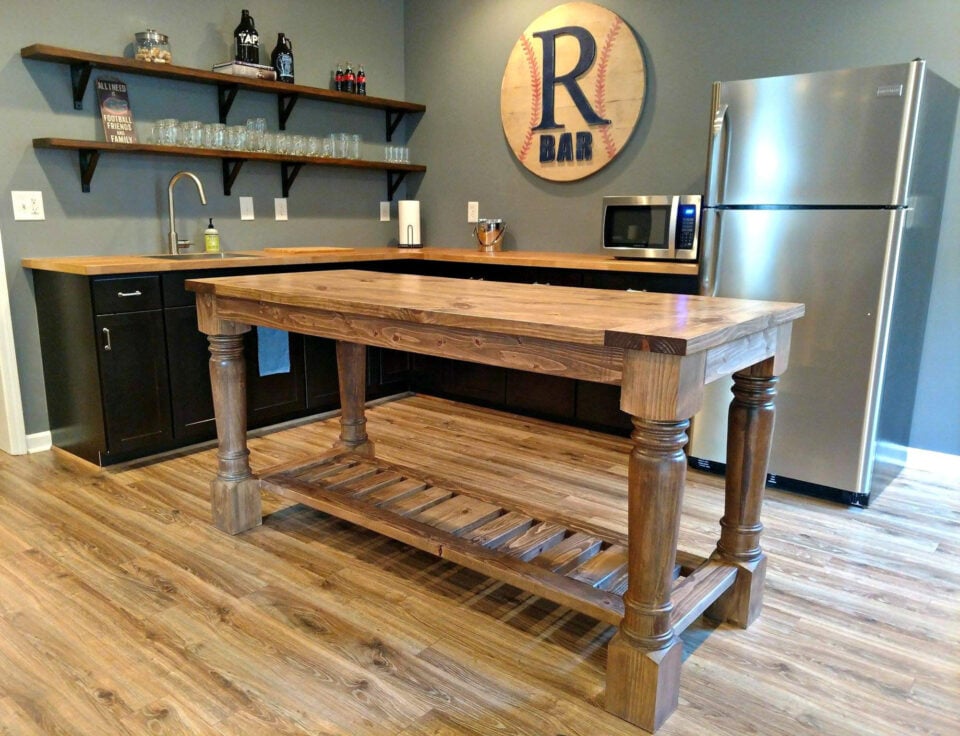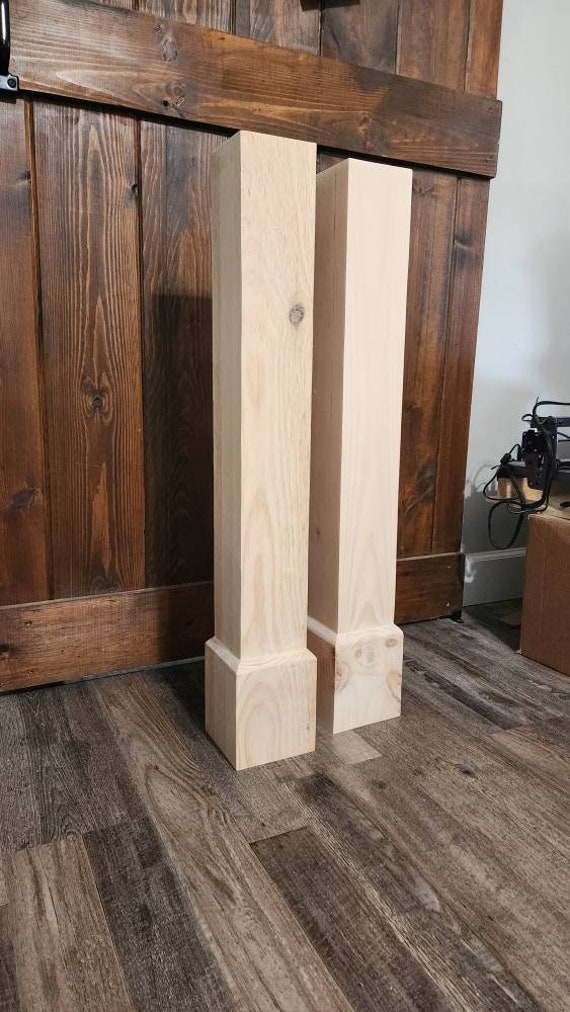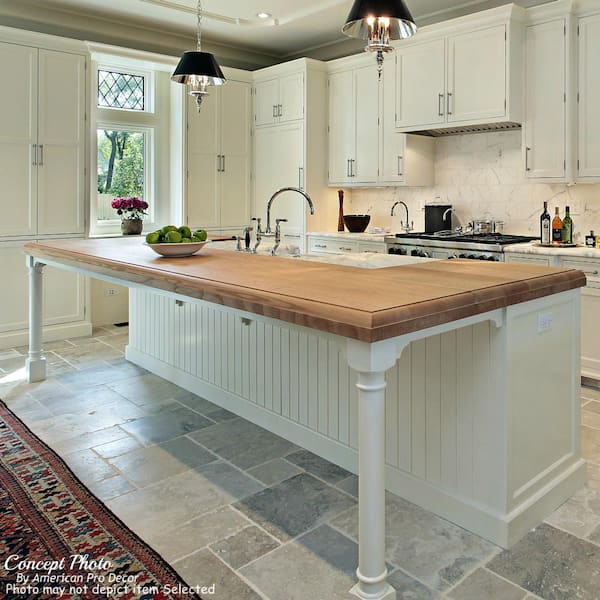Picking the Suitable Kitchen Island Leg for Sturdiness and Functionality
Picking the Suitable Kitchen Island Leg for Sturdiness and Functionality
Blog Article
The Value of a Sturdy Kitchen Area Island Leg in Creating a Practical Cooking Area
A sturdy kitchen island leg works as a fundamental part in developing a functional food preparation atmosphere, supplying necessary support for both the counter top and various cooking area tasks. The security it provides can substantially lower the threat of accidents in high-traffic areas, while likewise contributing to the total aesthetic comprehensibility of the area. As kitchen areas develop into multifunctional areas for cooking, dining, and interacting socially, the selection of materials and design considerations for island legs comes to be increasingly essential. Comprehending these aspects can change your kitchen into a much safer and more effective location, motivating more expedition into the finest choices readily available.
Benefits of Sturdy Island Legs
Offering necessary support, durable kitchen island legs play a crucial function in boosting the functionality and toughness of cooking area islands - kitchen island leg. These legs not only birth the weight of the kitchen counter and any additional products put on the island, but also add to the general stability of the framework. A well-supported cooking area island makes sure that it remains functional and upright, also under heavy usage, which is especially essential in active kitchen environments
Furthermore, tough island legs can improve the aesthetic charm of the cooking area. They supply a solid framework that can enhance various style styles, from modern-day to conventional. This convenience enables house owners to customize their cooking area islands according to individual preference while making certain that the structural integrity remains uncompromised.
In enhancement to their helpful duty, robust kitchen area island legs can likewise improve safety. Eventually, spending in durable kitchen area island legs is crucial for a useful and aesthetically pleasing cooking area.
Products for Kitchen Island Legs
When choosing materials for kitchen island legs, sturdiness and aesthetic charm are critical factors to think about. The most typical products consist of hardwood, metal, and engineered timber, each offering one-of-a-kind benefits.
Hardwood, such as maple, cherry, or oak, is a classic selection due to its toughness and timeless charm (kitchen island leg). It can endure significant weight and is immune to use, making it perfect for high-use kitchen environments. In addition, wood can be stained or painted to match various cooking area styles
Metal legs, often crafted from stainless steel or functioned iron, provide a industrial and modern look. They are incredibly strong and can sustain considerable lots while being resistant to dampness and warmth, which is advantageous in a cooking location. Steel legs can additionally be conveniently cleansed, enhancing their usefulness.

Style Considerations for Security
The option of materials for kitchen area island legs straight influences the layout factors to More Bonuses consider for stability. When making a kitchen area island, it is critical to examine the weight-bearing ability of the picked materials. Heavier materials, such as solid timber or steel, generally offer higher security, specifically under the tension of daily use.
In addition, the leg layout must include correct geometry to enhance security. A broader base enhances the support area, lessening the threat of tipping or wobbling. Consideration needs to likewise be provided to the height of the legs; out of proportion leg lengths can lead to discrepancy, jeopardizing the total security of the island.
In addition, the distribution of weight throughout the island is essential. Making sure that the leg placement lines up with the heaviest parts, such as devices and kitchen counters, will certainly better improve stability.
Maintenance Tips for Durability

Cleansing is one more vital aspect of maintenance. Depending on the material of the legs-- whether wood, metal, or composite-- appropriate cleansing approaches must be utilized. For wooden legs, a mild wipe with a wet fabric and a suitable wood cleaner will help protect their coating. Steel legs may need a light gloss to avoid corrosion and keep their gloss.
Furthermore, tightening up bolts and screws consistently can make sure stability and protect against tottering. If the cooking area island experiences heavy usage, take into consideration enhancing the legs with extra braces or supports to enhance sturdiness. Using a safety finish or sealer can safeguard against wetness and spots, extending the lifespan of the legs. By following these upkeep ideas, property owners can ensure their cooking area island legs remain functional and robust for years to find.
Picking the Right Leg Design
Routine upkeep guarantees that kitchen area island legs continue to be tough and functional, however choosing the appropriate leg design is equally essential for both aesthetic appeals and assistance. The selection of leg design can dramatically affect the overall layout and consistency of your cooking area.

Capability is an additional essential facet. Thicker legs or those with a durable base can support much heavier kitchen counters and tools, improving the island's utility. On the other hand, slim legs may develop an airy appearance, suitable for lighter layouts however potentially less encouraging.
Verdict
In summary, the importance of sturdy kitchen area island legs can not be overstated in the creation of a useful food preparation location. These legs offer essential support, improve security, and add to the overall aesthetic of the kitchen area. By carefully selecting suitable products and designs, along with implementing appropriate maintenance techniques, the longevity and effectiveness of cooking area islands can be made sure. Ultimately, investing in robust island legs is fundamental to achieving a safe and reliable culinary environment.
A sturdy cooking area island leg offers as an essential component in establishing a useful cooking setting, offering required assistance for both the counter top and various kitchen tasks.Providing vital support, tough kitchen island legs play a pivotal function in improving the functionality and durability of cooking area islands. Inevitably, spending in strong kitchen area island legs is essential for a functional and visually pleasing cooking location.
Consideration ought to additionally be offered to the elevation of the legs; disproportionate leg lengths can lead to imbalance, jeopardizing the total stability of the island.
Wooden legs give heat and a traditional look, while metal legs supply a modern and industrial feel.
Report this page